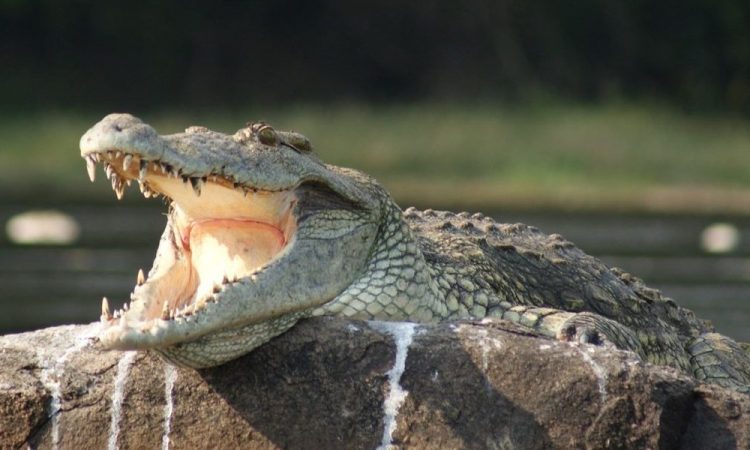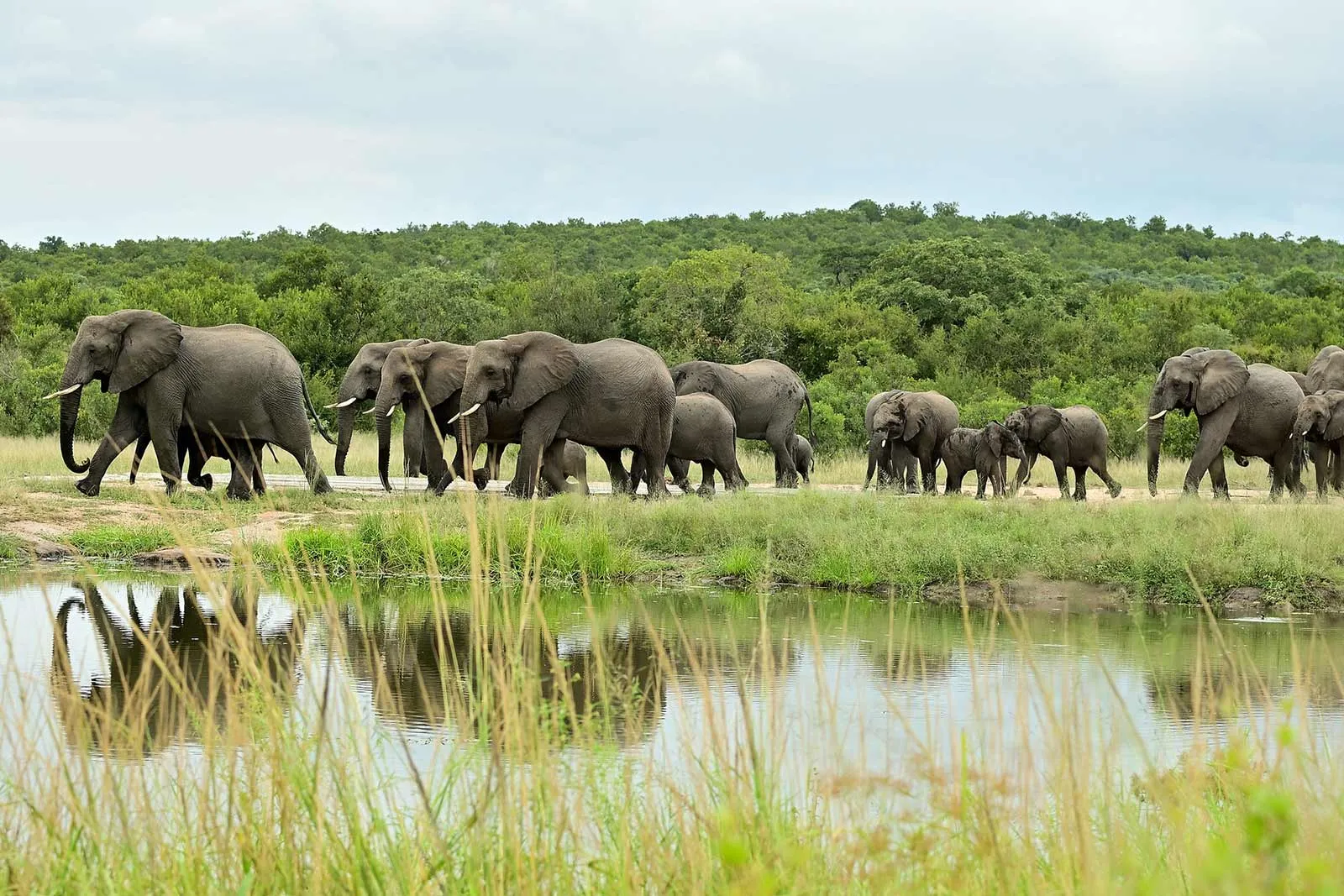The Top 8 Most Dangerous Wildlife to sight on Uganda Safari : In addition to being home to many dangerous creatures, Uganda is one of the top safari destinations in Africa, drawing millions of tourists each year. When left alone, wild animals typically do not assault humans. They may, however, strike if provoked. Because of this, visitors on safari in Uganda’s game parks should use caution with animals, especially those that seem dangerous. Here are the eight most dangerous animals you will encounter on a safari in Uganda:

Hippo
The most dangerous animals on a Uganda safari are hippos, which belong to the Big Five family and are typically found in rivers and lakes in places like Lake Albert, the Victoria Nile in Murchison Falls National Park, and Queen Elizabeth National Park at the Kazinga Channel, among others.
Since hippos are Uganda’s most dangerous aquatic animal, visitors are recommended to exercise caution when visiting safari destinations in Uganda, taking a boat ride on one of the many bodies of water, or when hippos are out grazing, especially at twilight and dawn.
Hippos may consume up to 80 pounds of grass each day, and they spend the majority of the day under the water before emerging at night to feed. They are the most aggressive animals on the planet, capable of breaking a canoe boat in half with their strong teeth. They are also known to be among the most common causes of animal killing in Uganda and throughout Africa.
Steer clear of densely planted lakeshores and riverbanks when on a Uganda safari. Furthermore, be mindful that grazing hippos make a pathway through dense undergrowth that leads to an aquatic habitat. Hippos may be on land at certain times of the day, which increases the possibility of a head-on collision in a narrow waterway.
Nile Crocodile
The most hazardous creatures in Uganda are crocodiles; however, because they are not likely to attack outside of their hunting grounds, they are more of a concern to the local population and tourists. Nile crocodiles can be found in Uganda in a number of bodies of water, including Lake Albert and Lake Victoria, the Nile River in Murchison Falls National Park, and the Kazinga Channel in Queen Elizabeth National Park.
It’s best to stay a meter or so away from the shoreline because Nile crocodiles are the most dangerous reptiles for humans and the most formidable predators for animals that venture into their territory. Occasionally, a large, hungry one may drag an animal or person in from the edge of the water.
It should be noted that unless a native safari guide has certified the location safe, avoid bathing in any suspected crocodile habitat. It is safe to avoid the portion of the Victoria Nile between the Nile Delta and the Murchison Falls National Park, as this is the most dangerous crocodile habitat in Uganda.
Cape Buffalo
Out of the Big Five, cape buffaloes are the most dangerous because they engage in risky behavior to maintain their status within the family. When Big Five hunting was practiced in the past, more cape buffaloes were killed by safari hunters than by any other deadly animal in the wild.
Large herds of cape buffaloes inhabit the area; these animals resemble cows in appearance and are quiet and humble. Cape buffaloes are basically herbivore herds idly hoofing around Savannah; they lack the big, ravenous, scary streak that warns us of danger.
Despite being the most dangerous predators on a Uganda safari game drive, buffaloes are sometimes disregarded by safari operators and tourists since they do not have the appearance of valiant warriors.
Cape buffaloes were once thought to be the most dangerous game to pursue on foot. They become hostile and enraged when they are hurt. Recalling their prior confrontation, buffaloes would seek vengeance on the hunter; if hurt, they would surround their adversary and launch a counterattack rather than run for their lives.
Don’t annoy buffalo or get in their way while on a safari in Uganda. They will charge, especially if it’s a mother defending her child, rather than run away. An elderly bull past its prime is nothing but insecure, carrying tons of sexual frustration and grumpiness, and a wounded buffalo can be deadly. When on a safari in Uganda, watch out for buffaloes, particularly the elderly bulls who congregate in small groups and linger near waterholes.
Elephant
The elephant is the largest terrestrial mammal in the world and the most iconic representation of the fragility and grace of nature. One of Uganda’s most deadly creatures is the elephant, which can attack with a taunting charge and engage in hair-raising trumpeting.
The two subspecies of African elephants found in Uganda include savannah elephants, which can be seen in the national parks of Kidepo Valley, Queen Elizabeth, and Murchison Falls. The second kind of elephant can be found in forest parks such as Kibale Forest National Park and Bwindi Impenetrable National Park.
When you retreat at the first hint of discomfort after making an attack, rarely do they continue to pay attention to you. Give elephants plenty of room between you and them if you notice them before they do. Remember that they will most likely attack if you startle them close.

The best course of action in the event of an elephant charge is to run toward and climb the closest tree. If an elephant wanders near your lodge or campsite, resist the impulse to follow it on foot, as it could respond violently if left unattended.
Because of this, an elephant’s size allows it to turn a car and harm its occupants. Remain calm, and wait for it to cross the road or move out if it does not allow your vehicle to pass. You cannot back off if an elephant does not pose a serious hazard to your car.
Reviving the engine vigorously will usually discourage it from continuing with the competition; never turn off the engine when near elephants unless you are certain that they are at ease. Additionally, do not park your car between an elephant and another car.
Monkeys
Although monkeys can be harmful, vervet and baboon monkeys are the deadliest because they become hostile when they mistake humans for food. It is careless to feed the monkeys since it could attract their unwelcome attention and pose a threat or threats that could be harmful. When on a safari in Uganda and among the monkeys, it is forbidden to feed them.
While the majority of monkeys are too little to be a nuisance, baboons have occasionally murdered adults and wounded children with their sharp teeth. Their motivation for attacking you, unless they are cornered, is food, not people. Therefore, if there is a true conflict, drop the food before the baboons approach too close.
Monkeys may as well destroy your tent if you leave food, especially fruits, inside. Uganda’s Kibale Forest National Park, Bwindi Impenetrable National Park, and Semuliki National Park are home to monkeys. Even though the majority of the primates encountered during activities like tracking and hiking chimpanzees are habituated, it’s crucial to always follow your guide’s recommendations.
Large wild cats
Large cats can be found in Uganda’s major game areas, such as Kidepo Valley National Park, Queen Elizabeth National Park, and Murchison Falls National Park. Despite their reputation for being vicious, these enormous wild cats rarely attack people and only do so accidentally or in self-defense.
Although they rarely attack without cause, cheetahs pose little threat to adult humans, and leopards rarely attack unless they are cornered; lions are arguably the exception. Hyenas, on the other hand, are said to be the large cats’ archenemy; they are frequently connected to human settlements and have the potential to be destructive, but when disturbed, they are more prone to hiding in the shadows.
The most crucial thing to remember if you come across one of these large cats while out on foot is that fleeing will set off a pursuit impulse, which will ultimately win the race. It is preferable to remain motionless and retreat gradually, ideally avoiding eye contact.
If the predator appears scary, a loud confrontation is likely a better course of action than running away. Always sleep in a sealed tent when camping or in locations frequented by huge animals. A lioness in rage can be an extremely dangerous and huge predator.
Snakes
The majority of poisonous snakes are found in Uganda; when on a safari there, you may come across them while gathering sticks or stones, which is where they usually hide. Snakes typically retreat when they detect the seismic vibrations caused by footsteps.
Snakes are more common to come across during guided walks, chimpanzee trekking experiences, and safaris in Uganda. The greatest defense against snakebite is to wear long pants for bites on the leg and sturdy walking boots for bites below the ankle. Nonetheless, fatal snakebite incidents are uncommon in Uganda.
Mosquito
The most harmful non-bipedal animal in Uganda is the malaria-carrying mosquito, which may be found practically anywhere with a low attitude. In the 7,000-foot-high Rwenzoris and Virugas mountain regions, mosquitoes are quite uncommon. Mosquitoes may only be nonexistent in Bwindi Impenetrable National Park.
In the savannah parks, around lakes, rivers, and woodlands, mosquitoes are common. Bring bug repellant and receive malaria medication from your doctor if you’re going on a safari in Uganda.


